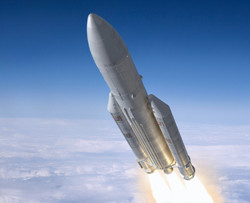Towards the next generation of plasma thrusters
Ion engines use electric power to create charged particles of the fuel, usually xenon gas, and accelerate them to extremely high speeds. The exhaust speed of conventional rocket engines is limited to the chemical energy stored in the fuel's molecular bonds. On other hand, ion engines are in principle limited by the electrical power available on the spacecraft, but in practice are much more efficient than chemical ones. In particular, helicon thrusters are at the frontier of ion propulsion systems. They operate with a variety of propellants and have a longer lifetime compared to conventional thrusters. Scientists initiated the HPH.COM (Heliconplasmahydrazine.COmbinedMicro) project to design a new plasma thruster based on helicon radiofrequency technology. With EU funding, the researchers explored its application for a mini satellite to allow a low-cost demonstration mission. Their feasibility study also covered the possibility of developing a combined two-mode thruster for both attitude and orbit control. It combined a low-thrust, high-efficiency plasma mode and a high-thrust, low-efficiency hydrazine mode. For this purpose, HPH.COM partners developed dedicated plasma simulation tools allowing the detailed investigation of complex physical phenomena. The numerical models, along with intensive experimentation, resulted in an innovative helicon technology with significantly higher ionisation efficiency compared to conventional helicon plasma sources. The engineering model of the thrusters was tested in three separate laboratories to reduce the development time. Finally, a mini satellite mock-up was designed and manufactured to prove the feasibility of the new technology that will be demonstrated in flight. Its structure is modular and easy to assemble and disassemble as well as adapt for any launch vehicle. Thanks to the long lifetime and capability to operate with a wide variety of gases, theHPH.COM technology should be attractive for a variety of space missions, including Earth observation and telecommunications. Combining high efficiency with low cost, the new plasma thruster is poised to boost the competitiveness of the European space industry.
Keywords
Plasma thrusters, rocket engines, ion engines, spacecraft, xenon gas, helicon thrusters



